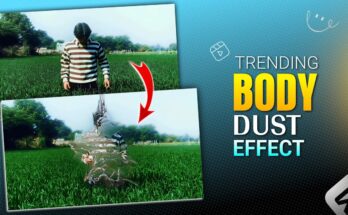Creating a viral music ball video is an exciting way to blend music, physics, and creativity into one captivating package. Music ball videos, where balls hit various surfaces to play notes, have taken social media by storm, capturing the imagination of millions. These videos appeal not only because of their intriguing sound but because they visually demonstrate the mechanics of music-making in a simple, captivating way.
Here’s a comprehensive guide to creating your own music ball viral video, covering everything from concept development and equipment needs to shooting techniques, editing, and finally, how to share it effectively to boost its chances of going viral.
1. Understanding the Appeal of Music Ball Videos
Before diving into the technicalities, it’s essential to understand why music ball videos have the potential to go viral. They captivate audiences for several reasons:
- Unexpected Melody: The visual experience of watching balls bounce and create a melody is mesmerizing and unique.
- Simplicity and Accessibility: Even those with little musical knowledge can appreciate the creativity and fun involved in this concept.
- Scientific Curiosity: These videos are often as much about physics as they are about music, appealing to a broader audience, including science and engineering enthusiasts.
- ASMR and Satisfaction: The precise timing and rhythmic sounds can provide a calming and satisfying viewing experience, adding to their appeal.
With this understanding, you can start building the concept of your video.
2. Developing a Concept
The foundation of any viral video lies in its concept. A good idea can make your video stand out and capture people’s attention instantly. Here’s how to develop your concept:
A. Choose a Popular Song
Choosing a well-known song will help viewers connect with your video faster, as they’ll recognize the tune and anticipate how you’ll bring it to life with the balls. Make sure to consider a song that resonates with a broad audience and isn’t overly complicated to recreate.
Example Songs:
- “Happy” by Pharrell Williams
- “Shape of You” by Ed Sheeran
- “Someone Like You” by Adele
- Any classic or trending TikTok song, as these often have a proven track record of audience engagement.
B. Create a Unique Twist
Consider how you can add a unique twist to make your video stand out. Here are a few ideas:
- Theme-Based Settings: Set your ball drop in a visually stimulating setting, like a carnival theme or using DIY props that align with the song’s lyrics.
- Unexpected Instruments: Instead of just metal or wood, try to include diverse surfaces like glass, plastic, or water for distinctive sounds.
- Interactive Elements: Some creators include close-up shots of dropping balls that invite viewers to “feel” the music.
3. Planning the Setup
The next step is setting up your instruments and props. Remember, the goal is to recreate the notes of your chosen song, so each surface you use must correspond to a particular note. Here’s a breakdown of what you’ll need:
A. Instruments and Surfaces
You’ll need a variety of objects to represent different musical notes:
- Xylophone Bars or Marimba Keys: These provide clear, resonant sounds and can be tuned to different pitches.
- Household Items: Everyday objects like glass jars filled with varying amounts of water, wood blocks, or metal sheets create diverse sounds.
- Custom Instruments: If you have access to tuning tools, consider creating your own “instruments” by adjusting the materials to produce precise notes.
B. Balls
Choosing the right balls is crucial. They must be heavy enough to produce sound but light enough to bounce for multiple hits.
Options:
- Rubber Balls: Bouncy balls are ideal as they create consistent, rhythmic sounds.
- Steel Balls: For deeper tones, steel balls work well, though they can be heavier to handle.
- Ping Pong Balls: These provide light, quick sounds perfect for creating high-pitched notes.
C. Note Placement and Configuration
This stage requires a bit of planning and some music knowledge. You can either:
- Follow the Song’s Melody: Map out the song notes and assign them to each surface.
- Use a Simplified Version: Simplify the song’s melody to avoid complex tuning, which can be difficult with makeshift instruments.
Arrange the surfaces in a way that allows each ball to hit the necessary notes in sequence.
4. Setting Up the Camera and Lighting
Good visuals make your video more engaging. Set up a high-quality camera and pay close attention to lighting. Here are some tips to optimize your setup:
A. Camera Positioning
Place the camera at an angle that shows the balls bouncing while also focusing on the instruments or surfaces. Here are a few popular camera angles:
- Top-Down: Ideal for capturing the balls’ entire path, especially if there’s a lot of movement.
- Side View: Adds depth and makes it easier to see each ball’s impact on the surfaces.
- Close-Up Shots: Adding close-up shots can emphasize certain notes and make the experience feel more immersive.
B. Lighting
Use well-lit environments to make your video appear professional. Soft, diffuse lighting reduces shadows and highlights the movement of each ball without overwhelming glare.
If you’re shooting indoors, consider LED lights, which offer bright and steady light with low heat. Natural lighting is also excellent but can be tricky to control.
5. Shooting the Video
Now, it’s time to start shooting! Here are some steps to help you capture the best footage possible.
A. Take Multiple Shots
It’s unlikely that you’ll get a perfect take on the first try. Take multiple shots, adjusting the balls’ drop points and timing if necessary. You may even want to split the song into segments, allowing you to focus on perfecting smaller sections before piecing it all together.
B. Use a Tripod or Stabilizer
Using a tripod or stabilizer keeps the camera steady, creating a cleaner, more professional look. A shaky camera can distract viewers, reducing the video’s impact.
C. Capture Close-Up and Wide Shots
Switching between close-up and wide shots will make your video more dynamic. For instance, use wide shots to show the full setup, then zoom in on specific notes for emphasis.
D. Record in High Resolution
The higher the resolution, the better. Aim for at least 1080p, which will help keep your video clear and engaging even when shared on various platforms. Many viral videos are shot in 4K, but that’s optional if your budget doesn’t allow it.
6. Editing Your Music Ball Video
Editing brings your video together, allowing you to fine-tune the timing, add effects, and enhance the sound. Here are the key aspects of editing a music ball video:
A. Syncing the Audio
Ensure that the sounds produced by the balls are perfectly synced with the video. In most cases, you may need to enhance or replace certain audio parts with higher-quality samples if the raw audio doesn’t capture the full essence of each note.
Software to Use:
- Adobe Premiere Pro or Final Cut Pro: These are professional options with extensive features for precise audio syncing.
- iMovie or DaVinci Resolve: These are free options that still offer solid audio and video editing features.
B. Adding Special Effects and Transitions
To make your video stand out, consider adding effects or transitions that emphasize certain parts of the song. You could use slow motion, for instance, to highlight a dramatic note or a complex ball movement.
C. Enhance the Audio Quality
If the raw audio needs improvement, consider layering in additional audio tracks. For example:
- Overlay Audio Samples: Use recordings of each instrument to overlay clean audio and achieve the perfect notes.
- Add Background Music: A soft background beat can make the overall sound fuller.
D. Color Correction
Adjusting the colors can enhance the video’s appeal, especially if you used various props and surfaces. Bright, vivid colors are visually engaging, while cooler tones can add a sophisticated, professional look.
7. Uploading and Sharing for Viral Success
Once your video is edited and ready to go, the next step is to share it strategically to maximize its potential for virality. Here are some tips for sharing:
A. Choose the Right Platform
Each social media platform has unique strengths:
- YouTube: Great for longer videos and complex productions. Add a catchy title, thumbnail, and description to attract viewers.
- TikTok: Ideal for short, catchy clips that grab attention quickly. Consider creating a condensed version of your music ball video for TikTok.
- Instagram Reels: Another excellent option for quick hits; like TikTok, it supports short, engaging content.
- Facebook and Twitter: Post your video on these platforms to reach a broader audience, especially if you include a relevant, catchy description.
B. Engage with Hashtags and Trends
Using the right hashtags is essential to reach a wider audience. Some popular tags for music videos include:
- #MusicVideo
- #MusicBallChallenge
- #ViralVideo
- #CreativeMusic
Check trending hashtags on each platform and add those as well.
C. Post at Optimal Times
Each platform has peak times for posting:
- YouTube: Wednesdays and Thursdays, 12 PM to 4 PM.
- Instagram: Around 11 AM and early evening hours.
- TikTok: Early in the morning or later at night when people tend to browse.
D. Collaborate with Influencers
Reach out to influencers who are likely to appreciate the creativity of your video. They may share it on their profiles, exposing your content to a broader audience.
E. Engage with Comments and Respond Quickly
Audience engagement can increase your video’s reach. Respond to comments, especially early on, as algorithms often favor posts with higher engagement rates.
8. Tips to Keep Your Video Engaging
For your video to go viral, it must captivate viewers from the beginning and keep them watching. Here’s how:
- Keep It Concise: Aim for a minute or two, especially if you’re posting on social media.
- Use Surprising Elements: Include a few unexpected sounds or visuals that keep people interested.
- Create Loops: On platforms like TikTok, looping videos can increase replayability.
9. Analyzing Performance and Optimizing
After posting your video, pay close attention to the analytics. See which parts of the video receive the most engagement and adapt your future content based on this feedback.
Download
Conclusion
Creating a viral music ball video combines musical creativity, technical skill, and a sense of adventure. By choosing the right song, setting up an engaging scene, editing your footage professionally, and sharing it effectively, you’ll increase your chances of capturing audiences’ attention and going viral. With patience, practice, and a bit of luck, your music ball video could be the next sensation across social media platforms.
For more useful Article keep visit Puletech


